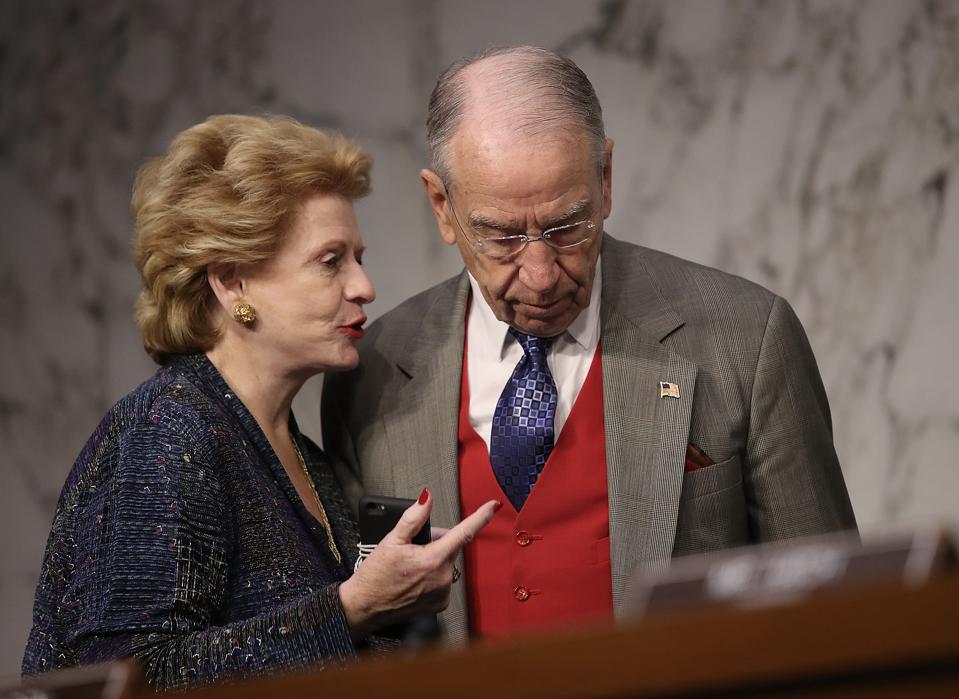By John C. Goodman
Originally posted at Forbes, November 2016
Virtually every Republican member of Congress who has been interviewed on TV has assured the national viewing audience that a top priority come January will be to repeal Obamacare. They make it sound easy. It is easy. At least defunding Obamacare is easy. And without any money to spend, what we call Obamacare would wither on the vine in short order.
Congress has already done this once. A procedure known as “reconciliation” deals with budget matters and it can’t be filibustered. That means if Republicans all vote in lock step the Democrats can’t stop them. Last year, Republicans in the House and the Senate voted to take all the money out of Obamacare through their reconciliation bill. The bill did not repeal the Obamacare mandates or Obamacare regulations because those are non-budget matters. But with no money to spend, all those mandates and regulations aren’t worth the paper they are written on.
Of course, President Obama vetoed the bill. But here is what is really important: Everybody knew he was going to veto it. Republicans in the House voted to repeal Obamacare or greatly cripple it on 60 some odd occasions. Each time, they knew that their vote meant nothing because the measure would be stopped in the Senate. Last year the Senate voted to defund Obamacare, knowing full well that their measure would be stopped at the White House.
These are called “free votes” because they never produce any bad consequences. But suppose President Trump signals that he would sign such a bill. Would Mitch McConnell really vote to repeal Obamacare if he knew that 231 thousand Tennesseans would lose their health insurance? How many other senators would vote to defund Obamacare if they thought 20 million people nationwide would lose their health insurance as a result?
Think about the people with Obamacare insurance who have cancer and need chemotherapy. Think of the patients with brain tumors who need an MRI scan. Think of all the patients at risk of heart attacks and strokes who need surgery. The national news media would have a field day training their cameras on all the victims of Republican heartlessness.
This of course will never happen. Even if congressional Republicans were heartless enough to do it, Donald Trump is not. As recently as last Sunday he told Lesley Stahl on 60 Minutes that there would be no repeal without replacement. And there will be no gap between repeal and replacement – not even a single day.
Ah, there’s the rub. In the 6 ½ years since the passage of the Affordable Care Act, Republicans have never been able to agree on how to replace it. Several Republican proposals are a similar structure to Paul Ryan’s “Better Way” plan, endorsed by some of the Republican leadership last summer. This proposal is an outline of an approach that has no numbers. It’s not hard to guess why. Once you start to put numbers on the plan, things start to get ugly.
The proposal begins by abolishing Obamacare and all its revenues. Then to avoid throwing 20 million people out on the street it imposes a Republican Cadillac tax, which is basically a tax on the health plans of ordinary workers. This tax will have to be very large in order to fund insurance for 20 million people. It would have to be really, really large to achieve the Trump goal of universal coverage.
But that is irrelevant because every Republican in the House is on record as opposing a Cadillac tax. And even if they weren’t so inclined, Trump has promised to lower taxes on blue collar workers, not raise them.
One of the great failings of Obamacare is that 33 million people are uninsured. Moreover, because of various fault lines in the legislation, estimates now project that the 33 million number is not going to change very much. In other words, we are going to permanently have roughly 10 percent of the population uninsured unless we make a fundamental change in our approach to health reform.
There is a way to do that and it is solidly Republican. Before there was Obamacare, Paul Ryan and his colleagues proposed a universal tax credit that would have provided minimum insurance to almost everybody. John McCain actually ran for president on the idea. It could also be bipartisan. Even though the Obama campaign savagely attacked the McCain health plan during the election, afterwards, Obama advisor Zeke Emanuel and others on the White house staff encouraged Obama to adopt McCain’s approach.
Unlike the Ryan/McCain universal tax credit, the most recent Republican proposals are focused only on the 10 million or so people in the exchanges and in some cases another 10 million who are benefitting from Medicaid expansion. By contrast, a universal tax credit would reach 200 million people. Instead of “reforming” health care for the few. It would reform health care for everyone.
The latest incarnation of the universal tax credit approach is incorporated in legislation by Rep Pete Sessions, Chairman of the House Rules Committee and Sen. Bill Cassidy, probably the most knowledgeable person on health policy in the Senate.
This legislation would allow everybody to have Medicaid-like insurance. And although there would be no reason for anyone to be uninsured, if they chose to do so the plan makes unclaimed credit money available to safety net institutions, so no one would go without health care.
Here is the question of the moment: Will Republicans on the Hill stand up to the special interests and give us this type of real health reform? Or will they punt?
This article was originally posted at Forbes on November 17, 2016.

0 Comments